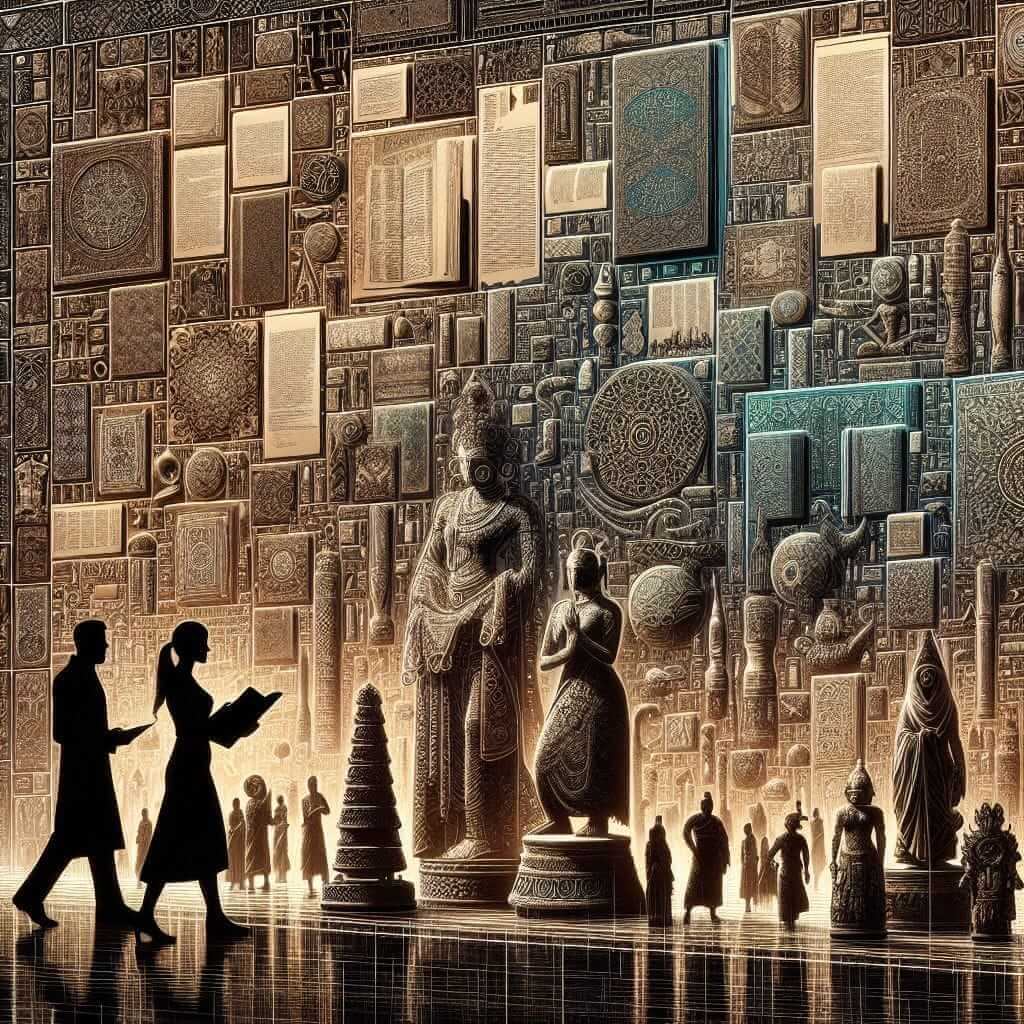The IELTS Reading section can be challenging, especially when it covers topics that require specific understanding, such as “Cultural Heritage and Modern Technology.” This topic has been trending due to the ongoing dialogue about preserving cultural assets in an increasingly digital world. Given its relevance, there’s a high probability that such themes may appear again in future exams. In this article, we will create a comprehensive IELTS Reading exam based on this theme, complete with questions, answers, and in-depth explanations.
Cultural Heritage and Modern Technology Reading Practice
Passage
Cultural Heritage and Modern Technology
Cultural heritage refers to the legacy of physical artifacts and intangible attributes inherited from past generations. It includes buildings, monuments, books, works of art, and folklore, music, traditions, and languages. Modern technology, on the other hand, is characterized by developments in digital and scientific domains that have the potential to transform how we access and preserve cultural heritage.
The Role of Technology in Preserving Cultural Heritage
Modern technology offers a plethora of solutions for the preservation and dissemination of cultural heritage. For instance, digital archiving enables the storage and recovery of artifacts in digital formats, ensuring their longevity even if the physical counterparts deteriorate. Virtual reality (VR) has also made it possible to virtually reconstruct historical sites and monuments that are otherwise inaccessible due to geographical or political constraints.
Challenges and Opportunities
While the intersection of cultural heritage and modern technology presents numerous opportunities, it is not without its challenges. The digital divide can result in unequal access to cultural heritage, particularly for communities in less developed regions. Moreover, digital preservation necessitates sustainable practices to ensure the perpetual availability of digitized content. Hence, collaboration between technologists, historians, and policymakers is crucial.
Case Studies
Several initiatives demonstrate the successful integration of modern technology in preserving cultural heritage. The British Museum’s “Museum of the World” project, for instance, utilizes an interactive online platform to present its collections in a manner that transcends traditional boundaries. Similarly, the Smithsonian Institution has employed 3D scanning and printing technologies to replicate artifacts for both educational and restorative purposes.
Future Prospects
Looking forward, the role of artificial intelligence (AI) in cultural heritage preservation seems promising. AI can assist in identifying patterns in historical data, predicting the deterioration of artifacts, and even recreating lost historical elements. As technology continues to evolve, it will likely offer more sophisticated tools for safeguarding our cultural legacy.

Questions
Multiple Choice
-
What is one benefit of digital archiving for cultural heritage?
- A) It makes physical artifacts obsolete.
- B) It ensures the longevity of artifacts.
- C) It replaces the need for museums.
- D) It discourages physical preservation efforts.
-
In what way does VR contribute to cultural heritage preservation?
- A) By eliminating the need for physical visits.
- B) By reconstructing inaccessible historical sites.
- C) By providing storage solutions for artifacts.
- D) By funding archaeological excavations.
-
What is a challenge mentioned in the passage regarding digital preservation of cultural heritage?
- A) Lack of interest among technologists.
- B) Insufficient historical data.
- C) Digital divide in less developed regions.
- D) Excessive funding for such projects.
True/False/Not Given
-
The British Museum project involves the use of VR exclusively. (False)
-
AI techniques can help in predicting the deterioration of artifacts. (True)
-
Technology has no significant role in preserving intangible cultural heritage. (Not Given)
Answers and Explanations
Multiple Choice
-
B) It ensures the longevity of artifacts.
- Digital archiving allows for the storage and retrieval of artifacts in digital formats, preserving them even if physical artifacts deteriorate.
-
B) By reconstructing inaccessible historical sites.
- VR reconstruction allows for the virtual experience of historical sites that are geographically or politically inaccessible.
-
C) Digital divide in less developed regions.
- The passage mentions that the digital divide can result in unequal access to cultural heritage, particularly in less developed regions.
True/False/Not Given
-
False
- The British Museum project utilizes an interactive online platform, not VR exclusively.
-
True
- AI is mentioned as a promising tool for predicting the deterioration of artifacts.
-
Not Given
- The passage does not provide information about the role of technology in preserving intangible cultural heritage.
Common Mistakes and Vocabulary
Common Mistakes
- Overlooking Details: Many students lose marks due to not paying close attention to specific details in the passage.
- Misinterpreting Questions: Understanding what the question is asking is crucial. For example, distinguishing between similar options in multiple-choice questions requires careful reading.
Vocabulary
-
Artifact (noun) /ˈɑː.tɪ.fækt/: An object made by a human being, typically an item of cultural or historical interest.
- Example: The museum displayed ancient artifacts from Egypt.
-
Digital Divide (noun) /ˈdɪdʒ.ɪ.təl dɪˌvʌɪd/: The gap between those who have ready access to computers and the internet, and those who do not.
- Example: Efforts are being made to bridge the digital divide in rural areas.
-
Sustainable (adjective) /səˈsteɪ.nə.bəl/: Able to be maintained at a certain rate or level.
- Example: Sustainable practices are essential for long-term digital preservation.
Grammar Note
Relative Clauses: Often utilized to provide additional information about a noun, making the reading more complex but informative.
- Example: “The British Museum’s ‘Museum of the World’ project, which utilizes an interactive online platform, demonstrates…”
Tips for High IELTS Reading Scores
- Practice Regularly: Consistent practice with a variety of reading materials will improve your reading speed and comprehension.
- Expand Your Vocabulary: A broad vocabulary base helps in quickly understanding and interpreting passages.
- Focus on Common Topics: Familiarize yourself with recurrent IELTS themes such as technology, education, and cultural heritage.
By following these tips and regularly practicing with relevant reading materials, you can significantly improve your IELTS Reading scores. Embrace the evolving interplay between cultural heritage and modern technology, and apply this understanding to excel in your IELTS exam. For more insights into related topics, explore our articles on Cultural Impacts of Digital Art and Cultural Heritage and Globalization. Happy studying!